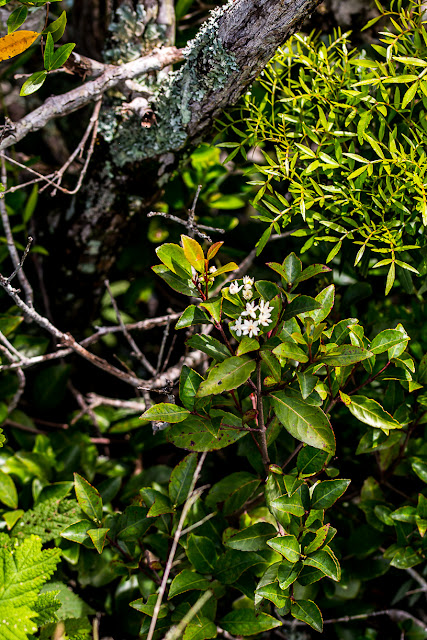We were invited to participate in a bioblitz aimed at providing a baseline of species data for a planned big 5 game reserve in Zululand. Our task was to compile an initial plant species list, while others would concentrate on birds, mammals and reptiles. Kate and I drove through Melmoth and shortly after crossing the White Umfolozi, turned off into the Matatane Game Reserve where we checked in and unpacked. Yvette and her colleagues arrived shortly after this and got themselves ready to recce for birds and small mammals at Zulu rock in the afternoon while we decided to botanise at Matatane.
On a very hot afternoon we set off from the central boma in the direction of the Matatane River, recording tree species as we wandered through this bushveld. We were only a mild irritation to a herd of impala and later to a few zebra. The conditions were very dry despite having had a little rain during the previous week, so there were not many herbs to see amongst the dry grass. We did however find a population of Lasiosiphon capitatus as well as a few Gomphocarpus fruticosus. Later, when back at the boma, we found ourselves under some Berchemia zeyheri; these were in fruit and clearly birds had been enjoying them as the ground below the trees was littered with seeds. We had some homework to do that afternoon as we had collected several specimens either for pressing or for keying out using our reference books.
We then retired to our chalet with the background roar of the water far below us in the White Umfolozi river valley.
 |
| Vachellia nilotica |
 |
| Vachellia robusta |
 |
| Gomphocarpus fruticosus |
 |
| Lasiosiphon capitatus |
 |
| Ozoroa sphaerocarpa |
 |
| Berchemia zeyheri |
The next morning we drove a short distance in the direction of Vryheid and turned off into the Zulu Rock Game Reserve. At the office, Game Guard Siyanda was allocated to keep us safe from the potentially dangerous Cape Buffalo and White Rhino while we were walking in the veld and botanising. We explored a few granite batholiths and found some interesting plants, one of which we think is
Aneilema brunneospermum (subsequently confirmed)
. We enjoyed his enthusiastic company for an hour or so until he was called away to other duties and Cilla Hilcove of Conservation Outcomes (the company facilitating the establishment of this big 5 reserve) took over the role of showing us the lie of the land.
We drove towards the area that had been burned last year and that seemed very popular with the game. On the way we noticed the hilltop above us strewn with quartzite boulders and decided this geology warranted a closer look.
It was not long before we found a population of the attractive
Lasiosiphon splendens; the silvery-haired backs of the leaves make this plant quite striking. At the top of the ridge we found a
Helichrysum which we believe to be
H. lesliei; this needs to be verified however as currently the only known population of this plant is far away in Mpumalanga
 |
| Albuca shawii |
 |
| Indigofera velutina |
 |
| Tetraselago natalensis |
 |
| Aneilema brunneospermum |
 |
| Imposing buttress |
 |
| Helichrysum confertifolium |
 |
| Lasiosiphon splendens |
 |
| Hyperacanthus amoenus |
 |
| Helichrysum cf lesliei |
By this stage, the heat was becoming very oppressive, so we walked back to the vehicle and drove further. At the bottom of this slope we stopped to look at a large raptor - this turned out to be a juvenile Martial Eagle. This site had some interesting forbs such as
Aloe minima and
Crabbea hirsuta. We sought out a shady spot to have some lunch and cold water. Driving on, our ventures away from the air-conditioned interior of the car became shorter and shorter. We eventually gave up and headed back to Matatane for a swim and a chance to process the material collected at Zulu Rock.
 |
| Crabbea hirsuta |
 |
| Aloe minima |
 |
| Barleria mayeriana |
 |
| Impressive rock outcrops |
 |
| Kudu and Wildebeest |
 |
| Looking down at the White Umfolozi River and the Red Rock |
 |
| The White Umfolozi valley |
The next morning we made a brief sortie around the camp, under the watchful gaze of giraffe. Very light overnight rain had prompted some of the trees to flower so there was more to see before returning home.
Participants: Graham G, Kate G.








































